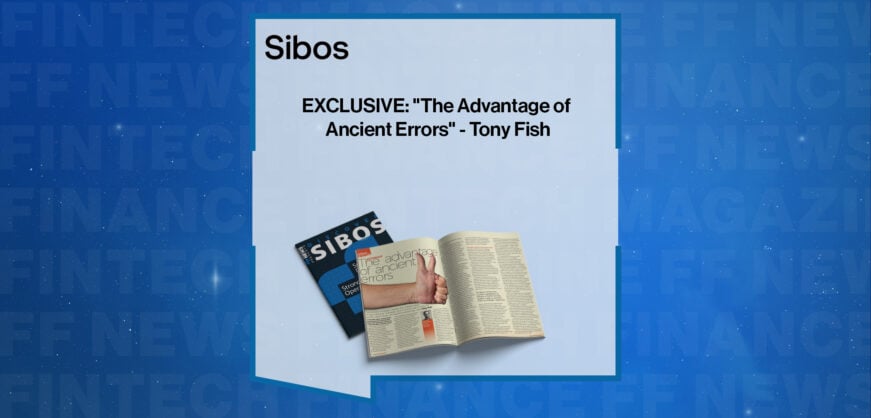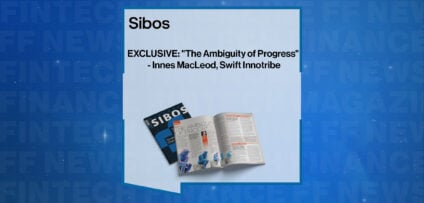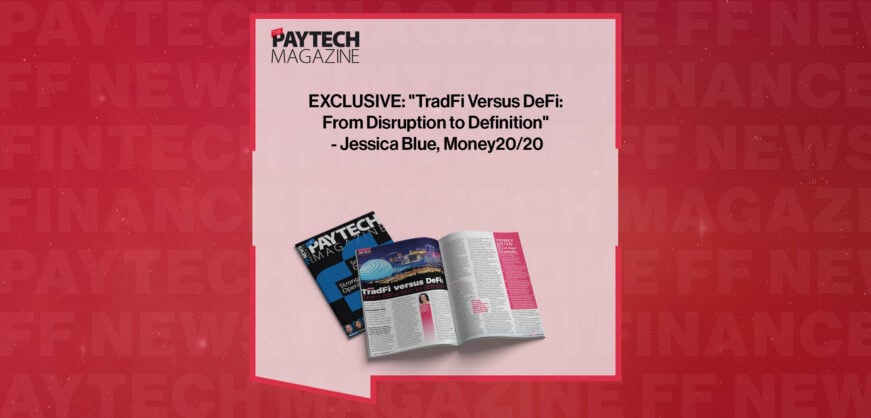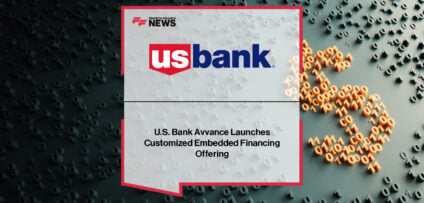Breaking News
EXCLUSIVE: “To Boldly Go…” – Toine van Beusekom, Icon Solutions in ‘Discover Sibos 2025
Toine van Beusekom argues for banks to shape their own destiny by taking a future-facing approach to payments. A2A could be the key
For years, banks have operated with fragmented payment systems, focussing more on regulatory deadlines than future-proofing their technology stack. While using multiple engines to process different payment types – often with an ISO 20022 mapper to support – might have worked during a period of low-volume real-time transactions, it’s becoming clear that this will work going forward.
In a world of rising customer demands for fresh, easier, cheaper solutions, and surging instant payment networks – SEPA Instant becomes fully operational this October – they need something more. Toine van Beusekom, Strategy Director at Icon Solutions, believes one of the biggest opportunities for banks to reclaim ground lost to fintech challengers lies in crystallising their account-to-account (A2A) payment capabilities to deliver true innovation. A2A payments, which promise speed, simplicity, and cost-effectiveness over card-based alternatives, represent a significant opportunity for banks, says Beusekom.
“The top priority, however, is resilience,” he cautions. “A bank won’t get in the news for delivering faster payments, but if it’s relying on outdated technology, or hasn’t built a scalable new solution, it’ll eventually be in the news for system outages that prevent people from going about their daily lives.”
Beyond resilience, there’s another risk: increasing difficulty in introducing new products or services.
“Put simply, banks that are still relying on outdated systems will find it harder to innovate,” adds Beusekom. Currently, fintech challengers are offering alternatives like crypto rails and instant payments through card networks such as Visa and Mastercard. These innovations are driving the shift away from traditional banking rails, thanks in part to a lack of unified protocols and outdated banking networks. So, can banks overhaul their existing systems and match the pace of change?
Beusekom is optimistic that they can – if they take a strategic approach.
“It’s about understanding why they’re transforming, what success looks like, and how they get there,” he says.
This shift involves replacing legacy systems with more efficient, future-proof solutions – reflecting the increasing trend towards rebundling by allowing banks to regain control and compete on innovation rather than just commodity-level payments. Icon’s approach centres on building permanent payment systems inside banks, replacing patchwork legacy systems with flexible, future-ready infrastructures, prioritising this giant task, piece-by-piece.
“We’re going head-to-head with ‘as-a-service’ solutions as well as traditional engine providers,” Beusekom notes. “We want to ensure banks have the capability to manage their payments ecosystems independently, rather than relying on external vendors.”
Out with the old
Founded in 2009 and headquartered in London, Icon Solutions boasts a breadth of expertise across banking, consultancy and tech. It is redefining payment systems by focussing on resilience first and helping its clients boldly build out from there.
“We offer something bespoke, based on open standards,” Beusekom explains. “Our goal is to help customers avoid getting stuck with the next legacy system. We use state-of-the-art technology, creating a library of functionality to enable future-proof payments. We’ve majored on orchestration technology because we know that the rails – whether SEPA Instant, FedNow, or ISO – are just a small part of a bank’s problem.
“The real challenge lies in integration, architecture, and technology stacks, where 80-90 per cent of banks’ transformation costs are spent. We set out to make that part lightweight and scalable.”
Banks must shift their focus from modernisation to transformation, urges Beusekom. While the former involves upgrading outdated systems to newer technologies, the latter requires rethinking payment ecosystems entirely and focussing on value-added services that generate revenue.
“Banks can no longer just be order takers,” Beusekom argues. “They need to reimagine their role in the payments value chain.”
“The real difference between A2A and card payments is that with cards, consumers get insurance, credit and dispute handling. Imagine if banks could offer similar services with A2A payments”
A key aspect of this transformation involves a shift in mindset: from a tactical, horizontal approach, to a strategic, vertical one. This allows banks to focus not just on compliance, but on creating value for customers and monetising payments.
“Banks need to start thinking about their payment systems not as a cost, but as a business opportunity. If they can’t make money on payments directly, where else can they generate revenue?” he says.
This will also help them lobby for budget in an environment where the regulatory imperative has receded and finance directors require further convincing. Icon’s approach encourages this kind of strategic thinking. By helping banks optimise customer journeys and create value-added services, they can unlock new revenue streams. For example, they could offer services like ESG payment checks or liquidity management as part of their suite of solutions. These services are more than just ‘nice-to-haves’ – they’re potential profit centres that banks can charge for.
“If banks don’t bake these services into their ecosystems now, it’ll be much harder to introduce them later,” Beusekom warns. “By failing to modernise, they risk becoming dependent on external parties.”
Larger banks are increasingly seeking to break free from this potentially costly and limiting interdependency. Some are even exploring processing payments for smaller banks, effectively becoming payment service providers themselves. Despite the complexities involved – many banks have hundreds of applications in their payments ecosystems – Icon helps banks consolidate their systems into a cohesive whole. But how do these often huge, incumbent institutions get to the point where they’re ‘future-ready’? It starts with identifying inefficiencies and areas of fragmentation.
“We help banks prioritise and tackle these issues step by step, ensuring they don’t waste money on non-strategic initiatives,” says Beusekom.
The need for speed
With customer expectations rising, innovation is the name of the game.
“I’ve heard the same conversations about payments for the last 20 years,” Beusekom says. “Having effective rails for clearing and settlement is now just table stakes. To succeed in today’s competitive environment, banks must be able to integrate new products and ways to clear and settle into their ecosystem quickly.”
While ISO 20022 took up much of the spotlight in recent years, Beusekom argues that banks can’t afford to let innovation that’s not forced by regulation to take a back seat.
“ISO 20022 is more than 20 years old, and it’s just a data structure. It’s essential, but it’s not enough. Banks must be thinking beyond compliance and looking for ways to innovate on top of that framework,” he adds.
This is where A2A payments come in because they offer them the chance to differentiate in a space that’s still up for grabs. And it naturally sits with banks as established clearing houses.
“The real difference between A2A and card payments is that with cards, consumers get insurance, credit and dispute handling. Imagine if banks could offer similar services with A2A payments.”
But if they want to offer a true alternative to the card rails, banks must shift away from the current product management approach, Beusekom adds.
“The product owner’s job is often limited to ticking boxes for compliance, negotiating vendor contracts, and getting a 10 per cent discount,” he says. “That’s not the mindset needed for creating value.”
Instead, Beusekom advocates for a vertical strategy, built on value-added services and data monetisation. It encourages banks to ask questions like, ‘how do I make money on this? What’s the cost?’. There are banks that don’t even know how much money they’re losing on payments, he points out.
“They dismiss it as a cost of doing business. But if they could reframe their approach, they could find opportunities to generate revenue.”
Emulating the speed and agility of newer fintech rivals like Revolut is also crucial.
“Incumbent banks must learn from these challengers and become more creative,” Beusekom says. “Otherwise, they risk becoming just the rails, while others build the products.” By thinking strategically, he believes that banks can reimagine their role in the payments ecosystem.
“It all starts with the ‘why?’,” Beusekom concludes. “Once they understand their end goal, they can make decisions that guide their organisation toward what effectively becomes a North Star, and get everyone aligned.
“Our name, Icon, could also stand for ‘I control.’ It’s about enabling banks to control their own destinies.”
This article was published in Discover Sibos 2025, Page 32-33
People In This Post
Companies In This Post
- EXCLUSIVE: “TradFi Versus DeFi: From Disruption to Definition” – Jessica Blue, Money20/20 in ‘The Paytech Magazine’ Read more
- The Paytech Magazine Issue #17 Read more
- World’s Largest Fintech Meetings Event Expands to Europe with 2026 Lisbon Launch Read more
- Innovation Celebrated as Winners of Open Banking Expo Awards 2025 Revealed Read more
- Fintech Revolution Summit 2025 Read more















